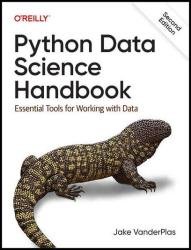 Название: Python Data Science Handbook: Essential Tools for Working with Data, 2nd Edition (Final Release)
Название: Python Data Science Handbook: Essential Tools for Working with Data, 2nd Edition (Final Release)Автор: Jake VanderPlas
Издательство: O’Reilly Media, Inc.
Год: 2023
Страниц: 591
Язык: английский
Формат: True/Retail PDF EPUB
Размер: 30.8 MB
Python is a first-class tool for many researchers, primarily because of its libraries for storing, manipulating, and gaining insight from data. Several resources exist for individual pieces of this data science stack, but only with the new edition of Python Data Science Handbook do you get them all--IPython, NumPy, pandas, Matplotlib, scikit-learn, and other related tools.
Working scientists and data crunchers familiar with reading and writing Python code will find the second edition of this comprehensive desk reference ideal for tackling day-to-day issues: manipulating, transforming, and cleaning data; visualizing different types of data; and using data to build statistical or machine learning models. Quite simply, this is the must-have reference for scientific computing in Python.
In my teaching both at the University of Washington and at various tech-focused conferences and meetups, one of the most common questions I have heard is this: “How should I learn Python?” The people asking are generally technically minded students, developers, or researchers, often with an already strong background in writing code and using computational and numerical tools. Most of these folks don’t want to learn Python per se, but want to learn the language with the aim of using it as a tool for data-intensive and computational science. While a large patchwork of videos, blog posts, and tutorials for this audience is available online, I’ve long been frustrated by the lack of a single good answer to this question; that is what inspired this book.
The book is not meant to be an introduction to Python or to programming in general; I assume the reader has familiarity with the Python language, including defining functions, assigning variables, calling methods of objects, controlling the flow of a program, and other basic tasks. Instead, it is meant to help Python users learn to use Python’s data science stack—libraries such as those mentioned in the following section, and related tools—to effectively store, manipulate, and gain insight from data.
With this handbook, you'll learn how
IPython and Jupyter provide computational environments for scientists using Python
NumPy includes the ndarray for efficient storage and manipulation of dense data arrays
Pandas contains the DataFrame for efficient storage and manipulation of labeled/columnar data
Matplotlib includes capabilities for a flexible range of data visualizations
Scikit-learn helps you build efficient and clean Python implementations of the most important and established machine learning algorithms
Скачать Python Data Science Handbook, 2nd Edition (Final Release)